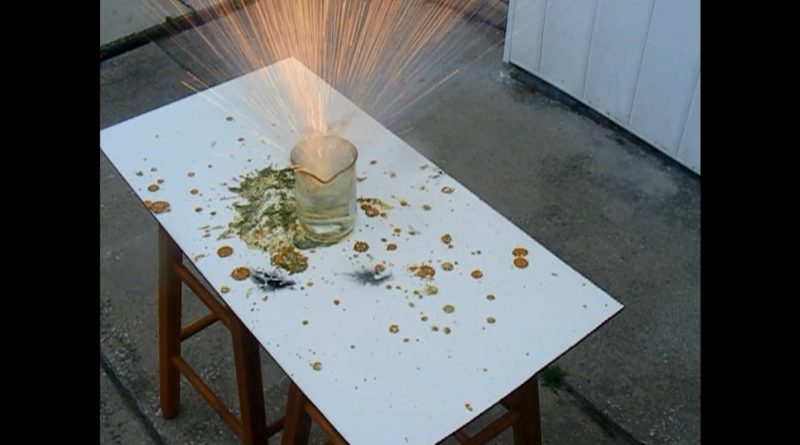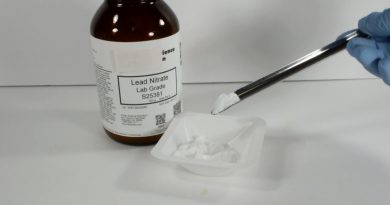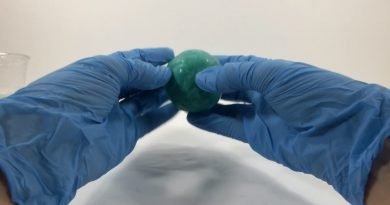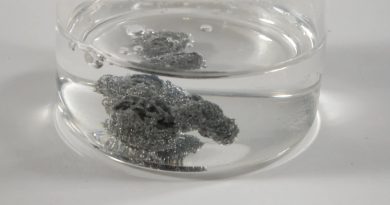Sodium vs. The Activity Series of Metals
Back in January, I made a video for the Chemicals From a Hat series about sodium. I had intended to revisit an experiment I ran a long time ago, but having broken one beaker already I wanted to rerun it outside. Not an easy thing to do in January in Chicago! So I waited until the middle of summer, and made a proper experiment out of it.
Here’s the back story: One of the first “real” chemistry experiments I did, with chemicals that you couldn’t find at the grocery store or hardware store, was the reaction of aluminum in a copper chloride solution. Because it was one of my first lab experiences, it—and the concept behind it—have a place in my heart. Fast forward to about 2012, I decided to go back to college and finish my degree. In the first few semesters, I took foundational classes to get my brain working again. Of course, chemistry was on the list (since that would be my degree program)!
In my refresher chemistry class, we did the reaction of aluminum with copper chloride solution. All of the procedures I’ve ever seen say that the chloride ion is critical to that reaction working, even though the activity series predicts that aluminum will always replace copper in solution. I did a few experiments using copper sulfate and various acids, and learned some interesting things. I’m sure I’ll do a video about that one day, so I won’t get into it here. This is about sodium, after all!
While I was doing the aluminum and copper experiments, I wondered if I could do similar reactions with other metals and metal ions. I wondered if I could go all the way to the top of the activity series and do something crazy like add lithium metal to a solution containing potassium ions. The lithium would react with water, and replace the potassium in solution (theoretically), and then as soon as the potassium comes out of solution it too would (theoretically) react with the water. My hope was that this would intensify the reaction.
Unfortunately, I didn’t have any lithium metal or potassium salts at the time. (Sadly, I still haven’t bothered to get any lithium metal!) But I did have sodium. I looked at the activity series, and picked iron. Iron is definitely less reactive than sodium, and I have an otherwise completely useless bottle of ferrous sulfate sitting on my shelf. So I mixed up a solution, poured it into a 250 ml graduated cylinder, took it outside, dropped in a piece of sodium, and covered the cylinder with a Petri dish. The reaction began right away.
The piece of sodium began dancing around and fizzing. Suddenly, it ignited. At this point, I remembered (rather, I became consciously aware) that hydrogen gas is being generated. And hydrogen is flammable—explosive, even! And there is an alkali metal fire burning in an atmosphere of increasing hydrogen concentration. And there’s a cover on the cylinder…
BOOM!
The hydrogen spontaneously ignited with a very loud report, sending the Petri dish cover flying several feet above the cylinder before it came crashing to the ground.
BOOM! BOOM!
Several more explosions rang out, each one spraying a rust-colored solution with suspended iron hydroxide all over the place. The neighbor across the street watching intently, judgmentally. People who couldn’t see the source of the noise must have thought there was a shooting. So I did what any self-respecting man of science would do. I went in my house, closed the door, and began laughing hysterically at the madness I had just created!
I was at once thrilled that my theory was somewhat proven; that the reaction between an alkali metal and water is intensified in the presence of less reactive atoms in solution. But I was also too terrified (and, admittedly, embarassed for the scene I caused) to continue experiments.
Fast forward again to this past December. I drew “Sodium” out of the chemistry fedora, and instantly knew I wanted to revisit that experiment. Being the middle of winter in Chicago, I would have to wait. This video, therefore, is not only the realization of what I wanted to do in the Sodium video a few months ago, but it is the long-awaited conclusion of the exeriments I started about seven years ago.
I’m not sure what’s next in this investigation. I think ultimately, I’m going to have to try the reaction with lithium and a potassium salt. Rest assured, my gears are still turning on this concept, and I do eventually plan to do that at the very least. I may have a few other ideas, too…




